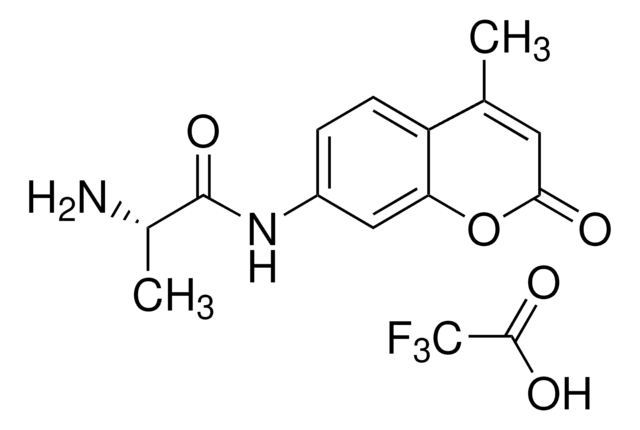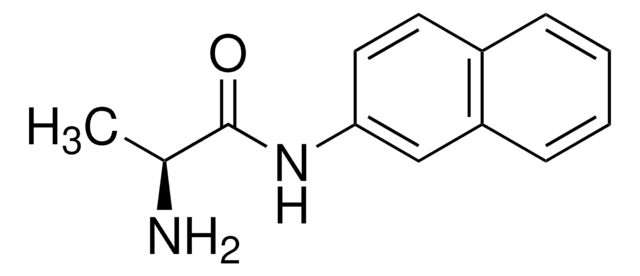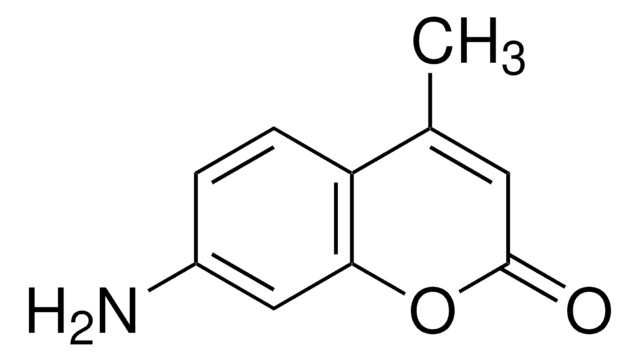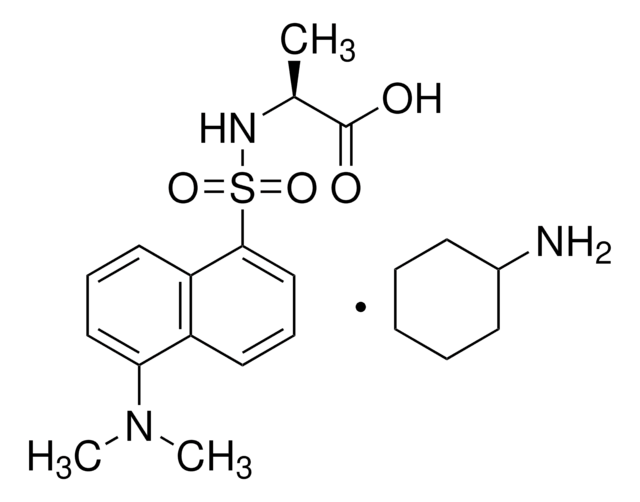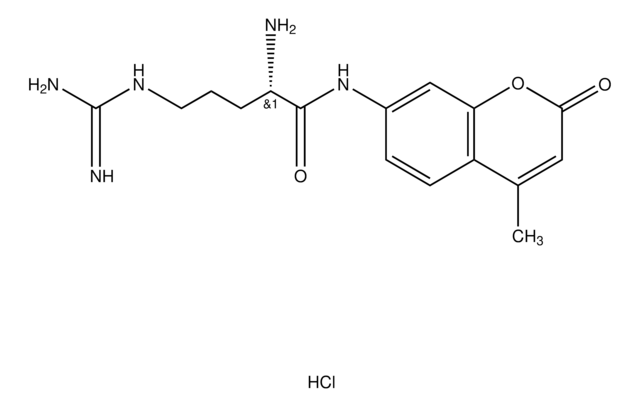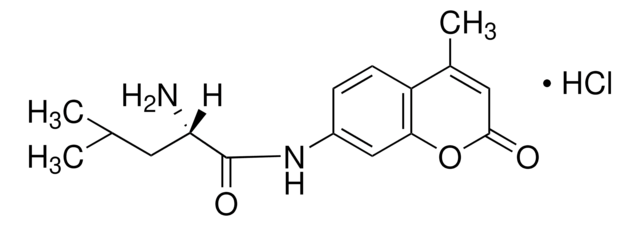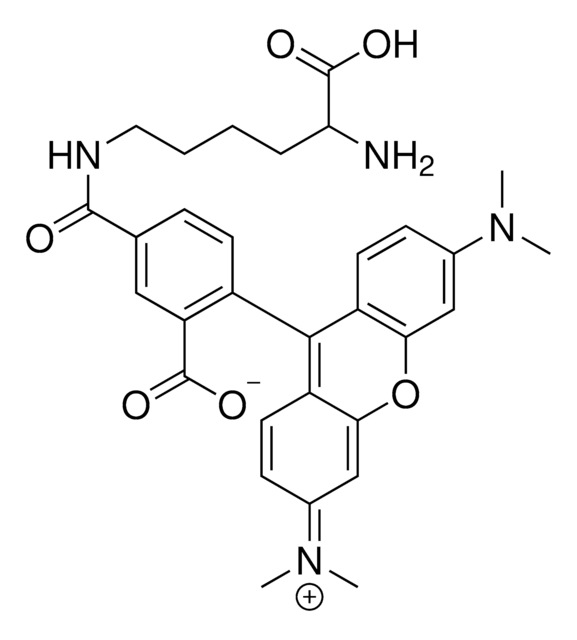Wichtige Dokumente
A1057
L-Asparaginsäure-β-(7-amido-4-methylcumarin)
≥98%, suitable for ligand binding assays
Synonym(e):
L-Asparaginsäure-β-(4-methyl-7-cumarinylamid), L-Asparaginsäure-4-(4-methyl-7-cumarinylamid)
About This Item
Empfohlene Produkte
Produktbezeichnung
L-Asparaginsäure-β-(7-amido-4-methylcumarin), fluorescent amino acid
Qualitätsniveau
Assay
≥98%
Form
powder
Methode(n)
ligand binding assay: suitable
Farbe
white to off-white
Lagertemp.
−20°C
SMILES String
CC1=CC(=O)Oc2cc(NC(=O)C[C@H](N)C(O)=O)ccc12
InChI
1S/C14H14N2O5/c1-7-4-13(18)21-11-5-8(2-3-9(7)11)16-12(17)6-10(15)14(19)20/h2-5,10H,6,15H2,1H3,(H,16,17)(H,19,20)/t10-/m0/s1
InChIKey
ARZPQBJTLVVDNP-JTQLQIEISA-N
Suchen Sie nach ähnlichen Produkten? Aufrufen Leitfaden zum Produktvergleich
Verwandte Kategorien
Biochem./physiol. Wirkung
Lagerklassenschlüssel
11 - Combustible Solids
WGK
WGK 3
Flammpunkt (°F)
Not applicable
Flammpunkt (°C)
Not applicable
Persönliche Schutzausrüstung
Eyeshields, Gloves, type N95 (US)
Hier finden Sie alle aktuellen Versionen:
Besitzen Sie dieses Produkt bereits?
In der Dokumentenbibliothek finden Sie die Dokumentation zu den Produkten, die Sie kürzlich erworben haben.
Unser Team von Wissenschaftlern verfügt über Erfahrung in allen Forschungsbereichen einschließlich Life Science, Materialwissenschaften, chemischer Synthese, Chromatographie, Analytik und vielen mehr..
Setzen Sie sich mit dem technischen Dienst in Verbindung.